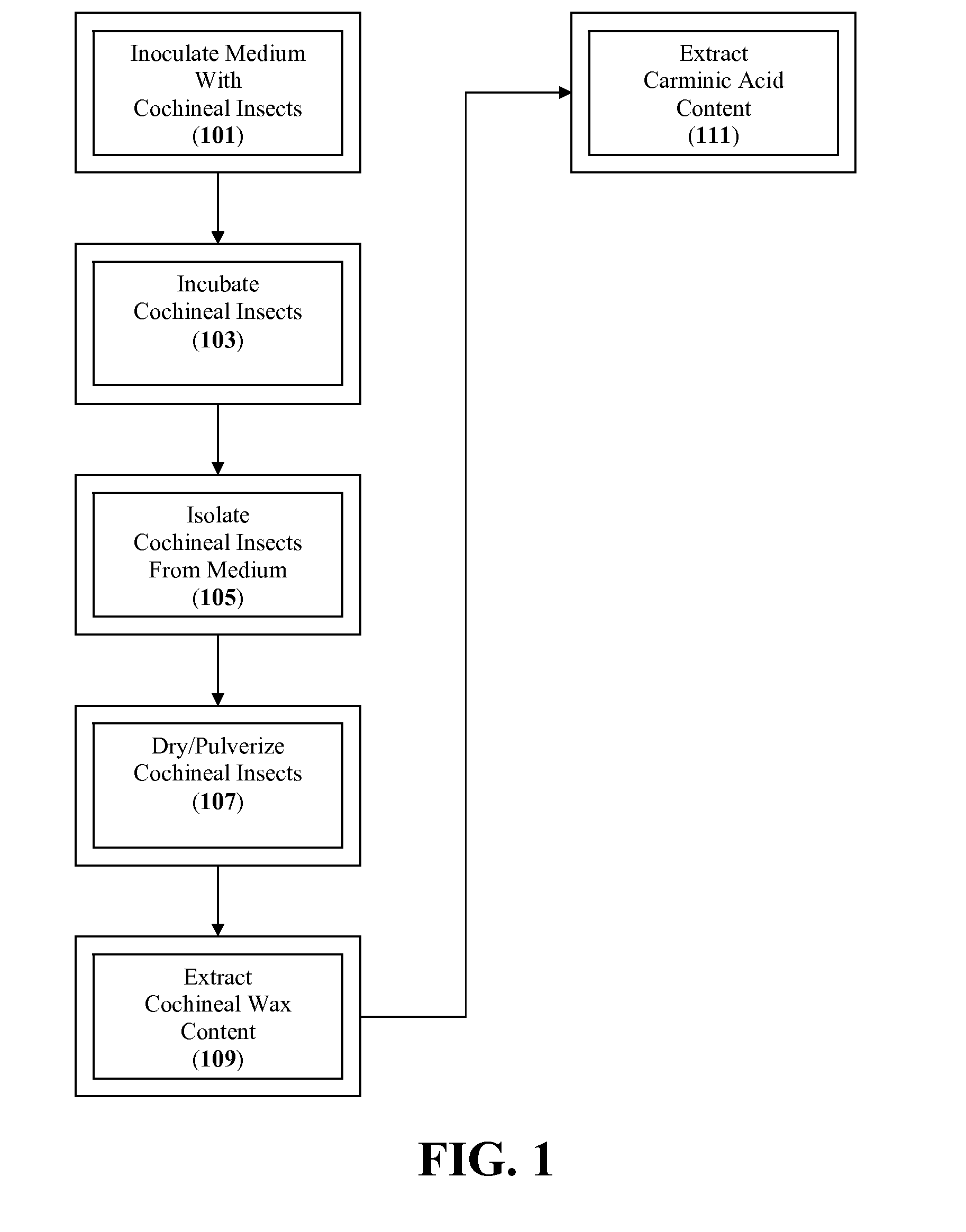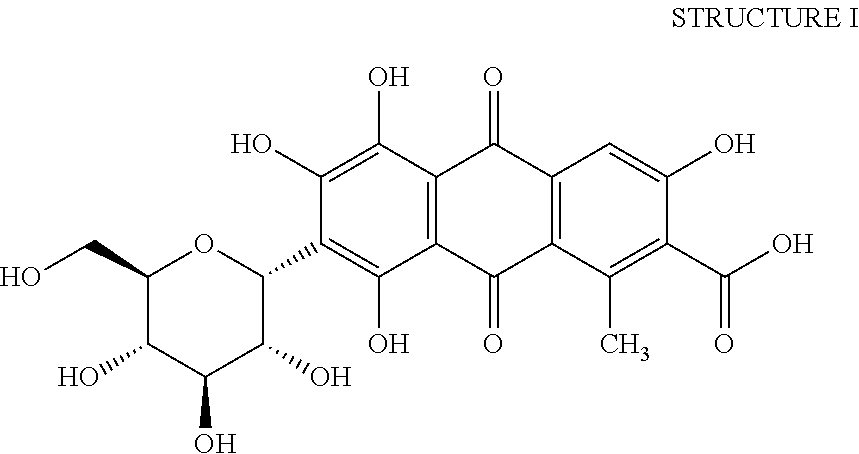Method for harvesting cochineal wax from cochineal insects grown on an artificial medium
a technology of artificial medium and cochineal insects, which is applied in the field of natural wax extraction systems and methods, can solve the problems of laborious and time-consuming process
- Summary
- Abstract
- Description
- Claims
- Application Information
AI Technical Summary
Benefits of technology
Problems solved by technology
Method used
Image
Examples
Embodiment Construction
[0012]As noted above, the methodologies disclosed in U.S. 2011 / 0036295 (Merkle et al.) have opened the door for widespread laboratory cultivation of cochineal insects. However, these methodologies have also been found to have further benefits as well. In particular, with suitable modification, these methodologies provide a convenient means by which useful products in addition to carmine may be recovered from cultivated cochineal insects.
[0013]The presence of cochineal insects on its native host, prickly pear (Opuntia), is typically indicated by a white, cottony substance. This substance, which has the appearance of mold or silk, is coccerin (also called cochineal wax), a waxy mixture secreted by the insects. Chemically, cochineal wax is known to contain predominantly cocceric acid (coccerylic acid, C31H62O3, mp 92-93° C.) and cocceryl alcohol (C30H62O2, mp 101-104° C. or (C30H60(OH)2). Cochineal wax provides protection for the insects and their colonies. Moreover, developing insects...
PUM
| Property | Measurement | Unit |
|---|---|---|
| length | aaaaa | aaaaa |
| length | aaaaa | aaaaa |
| melting point | aaaaa | aaaaa |
Abstract
Description
Claims
Application Information
 Login to View More
Login to View More - R&D
- Intellectual Property
- Life Sciences
- Materials
- Tech Scout
- Unparalleled Data Quality
- Higher Quality Content
- 60% Fewer Hallucinations
Browse by: Latest US Patents, China's latest patents, Technical Efficacy Thesaurus, Application Domain, Technology Topic, Popular Technical Reports.
© 2025 PatSnap. All rights reserved.Legal|Privacy policy|Modern Slavery Act Transparency Statement|Sitemap|About US| Contact US: help@patsnap.com


